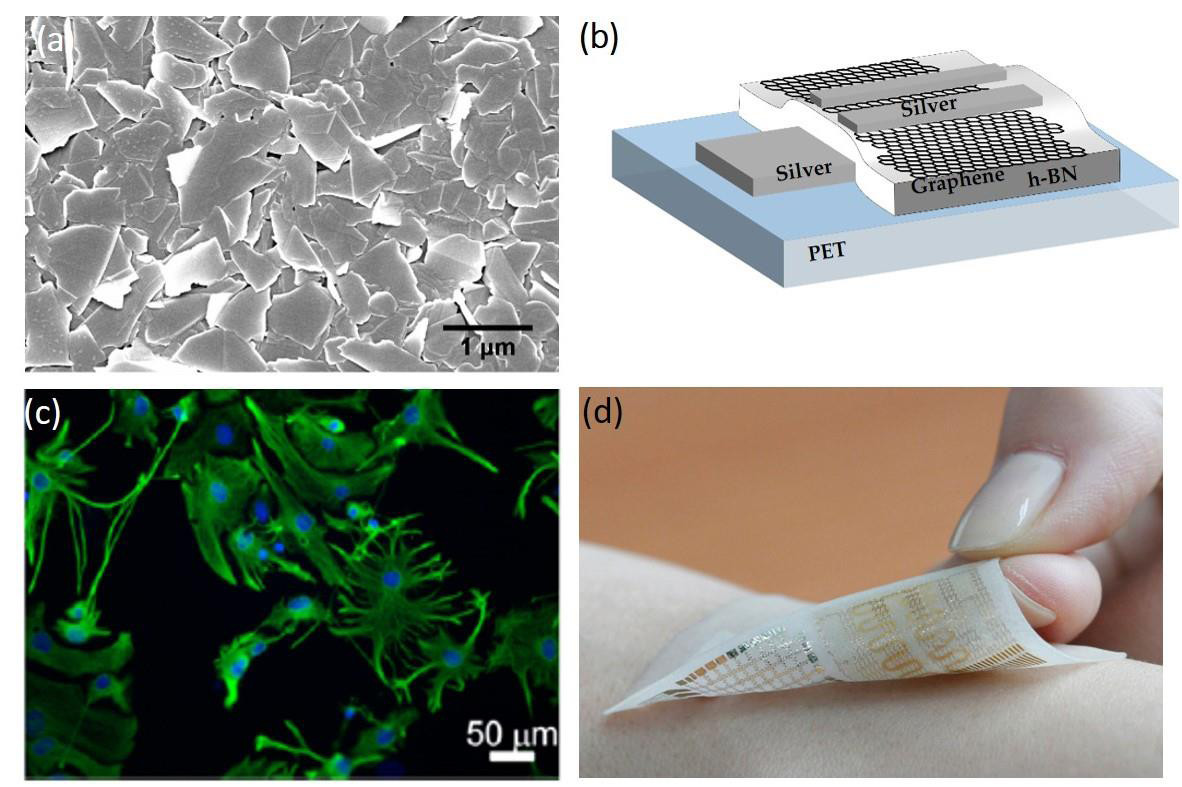Printed films of graphene and two-dimensional materials

Mercoledì 8 gennaio 2020, con inizio alle ore 15:30, presso l'Aula F del DFA, il Prof. Felice Torrisi (DFA & Cambridge Graphene Centre, Electrical Engineering Division, University of Cambridge, UK) terrà un seminario dal titolo Printed films of graphene and two-dimensional materials: electronic transport, wearable electronics and THz photonics.
Tutti gli interessati sono invitati a partecipare.
Abstract. Graphene and related 2D materials (GRMs) hold a great potential for flexible (opto)electronics and photonics for their novel electrical and optical properties. Low temperature production and deposition of nanostructured GRM films (fig.1a) from GRM-based solutions is extremely attractive for printed heterostructures in flexible electronics, [1] while the linear dispersion of Dirac electrons and the Pauli blocking in graphene films generates strong optical non-linearity, suitable for ultrafast photonics and optoelectronics. [2] GRM-based inks enable a large range of printed device and integration options, such as digital, lithographic printing and roll-to-roll coating, which are ideal to deposit nanostructured GRM films. Liquid Phase Exfoliation (LPE) of bulk precursor layered materials (such as graphite, MoS2 crystals, etc.) is a scalable approach ideally suited to produce inks. However, currently LPE has low yield, resulting in a low concentration of dispersed GRMs. I will give a brief overview about the development of high-yield, cost-effective and large-scale production techniques for GRM-based inks, and the portfolio of reproducible deposition processes enabling GRM-based printable and flexible (opto)electronic devices. [3]. Then I will show how careful tuning of the flakes-substrate surface interaction and GRM deposition process enables hybrid heterojunctions from 2D materials (fig.1b), achieving mobility > 150 cm2 V-1 s-1 at room temperature. [4] Finally, I will demonstrate how the biocompatible properties of graphene [6] and other two-dimensional materials are suitable as neuron-interfacing electrodes, (fig.1c) preserving the neuronal activity. This paves the way to the fabrication of flexible graphene-based devices on plastics or textiles for medical applications, (fig.1d) such as biosensors and neuroprosthetics[5], whereby graphene electrodes interact efficiently with the cells without altering the cells behaviour [6].
- F. Torrisi et al. ACS Nano, 6, 4, 2992 (2012)
- Z. Sun et al. ACS Nano 4, 2, 803, (2010)
- F. Torrisi & J. N. Coleman Nature Nanotechnol. 9, 10 738, (2014)
- T. Carey et al. Nature Commun., DOI : 10.1038/s41467-017-01210-2, (2017)
- M. Taale et al. ACS Appl. Mater. Interfaces 1, 5325-5335 (2019)
- F. Fabbro et al. ACS Nano 10, 615, (2016)